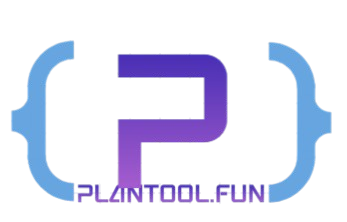Understanding Individual Learning Paths
In the realm of IT education, the concept of individual learning paths has emerged as a critical approach to personalizing the educational experience. This methodology acknowledges that learners come with diverse skill levels, unique learning styles, and varying career aspirations. By customizing learning experiences, educators and institutions can effectively cater to the specific needs of each student, fostering a more productive and enriching environment.
One of the primary benefits of implementing individual learning paths is the ability to align educational content with the learner’s current knowledge base. For example, a beginner may require foundational courses while a seasoned professional might benefit from advanced modules or specialized topics. By offering tailored content, learners can progress at their own pace, allowing them to build on their existing skills without becoming overwhelmed or unchallenged.
Additionally, understanding the significance of different learning styles is crucial in developing effective individual learning paths. Some students may thrive in structured environments, benefiting from traditional classroom settings and scheduled classes. Others may prefer a more flexible and self-directed approach, utilizing online resources and self-paced learning modules. By accommodating these diverse preferences, educational programs can enhance engagement and motivation, resulting in a more effective learning experience.
Moreover, a self-paced approach offers the unique advantage of allowing individuals to balance their educational pursuits with professional and personal commitments. Many IT professionals are already juggling demanding careers, making it imperative to provide a learning format that does not conflict with their daily responsibilities. By integrating flexibility in learning pathways, individuals can take control of their education, ensuring that they can engage deeply with the material without compromising other aspects of their lives.
Identifying Your Learning Style and Pace
Understanding your unique learning style is an essential step in crafting an effective individual IT learning path. Learning styles can broadly be categorized into three primary types: visual, auditory, and kinesthetic. Visual learners thrive on using images, diagrams, and visual aids, making them well-suited for courses that incorporate graphic representations and presentations. Auditory learners, on the other hand, benefit from listening to lectures, discussions, and podcasts, indicating that they may prefer courses that include these components. Kinesthetic learners learn best through hands-on experiences and practical applications, suggesting that they should prioritize experiential learning opportunities in their IT education.
Assessing your personal learning speed and preferences can significantly enhance the effectiveness of your education. One practical strategy is to take learning style assessments, which often include questionnaires designed to reveal your strongest preferences. These tools can offer insights into how you process information and guide you toward tailored learning opportunities. For instance, if you identify as a visual learner, you might seek out video tutorials or infographics to supplement traditional course materials.
Moreover, understanding your learning pace is equally critical. Each individual has a different capacity for absorbing new information. It may be beneficial to experiment with various study techniques and schedules to discover what works best for you. Keeping a reflective journal can also help track your progress and refine your approach over time. By regularly evaluating your strengths and weaknesses through such reflective practices, you can adapt your individual IT learning path to better align with your unique requirements and preferences. This personalized approach ultimately enhances your chances of success in the intricate field of IT education.
Creating a Flexible Learning Plan
In today’s dynamic digital landscape, pursuing a career in IT necessitates a learning approach that is not only self-directed but also adaptable to individual pace and preferences. Crafting a flexible learning plan enables learners to structure their educational journey around personal commitments, allowing for a balanced approach to skill acquisition. The first step in this endeavor is to set clear and achievable objectives. These objectives should reflect your desired outcomes, whether that be mastering a specific programming language, acquiring cloud computing skills, or understanding cybersecurity fundamentals.
Once objectives are established, it is crucial to create a realistic schedule for study sessions. Consider your daily routine: identify blocks of time when you can focus without interruptions. This schedule should be flexible, accommodating any unexpected personal or professional obligations that may arise. Integrating a mix of resources into your learning plan is another vital component. Utilizing various materials, such as instructional videos, textbooks, and interactive hands-on projects, caters to different learning styles and keeps the content engaging.
Moreover, the value of periodic self-assessment cannot be overstated. Regularly reflecting on your progress allows you to identify strengths and areas that may require additional focus. This self-evaluation can guide necessary adjustments to your learning plan to ensure it remains aligned with your evolving goals. As you advance, you may discover new interests or specialties within IT that compel you to revise your objectives. Embracing this continual refinement fosters sustained motivation and effective learning. A flexible learning plan, therefore, not only accommodates individual pacing but also enhances the overall learning experience, making it more efficient and enjoyable.
Utilizing Resources for Self-Paced Learning
In the evolving field of information technology (IT), self-paced learning has become an invaluable approach for professionals seeking to enhance their skills and maintain competitiveness. Various resources are available that cater to individual learning preferences, allowing learners to customize their educational experience. Platforms like Coursera, Udemy, and edX offer an extensive array of online courses, covering topics ranging from programming languages to cybersecurity. These platforms enable learners to select courses that align with their interests and goals, fostering a practical and efficient approach to acquiring knowledge.
In addition to comprehensive online courses, specialized platforms can deepen understanding in particular technologies. For instance, GitHub and Codecademy provide practical exercises and projects that incentivize engagement through real-world applications. Participation in these nature-focused environments nurtures a community atmosphere, encouraging learning from peers and experts alike. This interaction can be significantly beneficial, allowing learners to exchange ideas, troubleshoot challenges, and collaborate on projects, thus enriching their educational experience.
Forums and online communities, such as Stack Overflow and Reddit’s IT-related subreddits, serve as excellent platforms for seeking advice and assistance when encountering obstacles. Engaging in discussions within these communities not only provides solutions to specific queries but also broadens one’s network. Networking with other IT professionals further opens doors to mentorship and collaboration opportunities, which can be instrumental in achieving personal and professional goals.
To effectively leverage these tools, it is crucial to integrate resources into a personalized learning plan. Setting clear objectives and establishing a schedule can help maintain accountability. Regularly assessing progress through self-evaluations or peer feedback can also optimize the learning experience. By utilizing a combination of these resources, learners can ensure that their IT education remains both engaging and aligned with their professional aspirations.


No responses yet